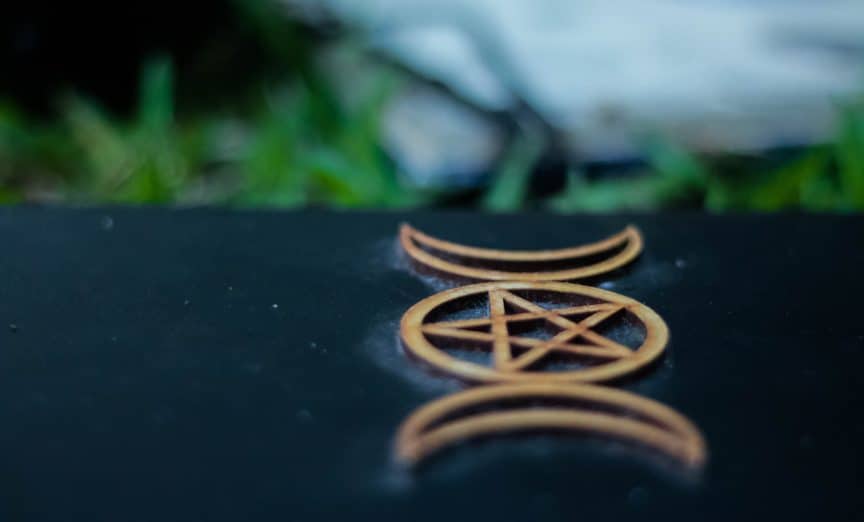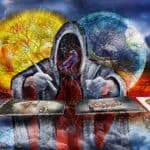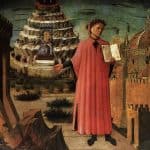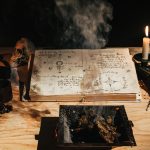When most people hear about Wicca, they think of witches and evil witchcraft practices and think of it as an occult group full of secret rituals.
Thanks to the depiction in pop culture and historical bias, intolerance, and persecution of those who practiced non-christian religion mainly associated with pagan roots, the general perception of Wicca is negative and suspicious.
Interestingly, this is a religion that does not even have a place for Satan. Here is a look at how the modern Wicca religion has evolved through the ages, its origins, guiding principles, and beliefs.
What is Wicca?
At its core, Wicca is an earth religion based on the reconstructed belief systems of religions that existed before Christianity. It is the worship of nature, and the deity is a goddess who is revered along with her male consort who is represented as a horned god.
The Supreme Being is the universe which is represented by the goddess also regarded as Mother Nature. Much of the belief system is based on the early traditions and practices in Ireland, Scotland, and Wales before Christianity became the predominant religion.
Such beliefs include ancient Celtic practices, Druidism, shamanism, Essene, Gnosis, and Norse, among others. Wiccan has had no problems adapting knowledge even from oriental practices, whether it is meditation practices or a deeper understanding of how the elements work.
It is important to note that the early practices did not identify themselves as Wicca but were simply versions of pagan religions with a strong reverence for nature, the practice of magic, and the use of rituals.
Its evolution to modern practice has seen several items added over the years. The various beliefs and items are what have characterized Wicca as a religion different from others, including Satanism.
Related reading: Most Commonly Practiced Branches of Wicca – Opens in new tab
The History of Wicca
It is hard to trace the history of Wicca to a single point in history since most written documents available for historians all claim to have picked their evidence from traditions handed down by ancient practices.
However, modern Wicca can be traced back to the mid-20th century, specifically to Gerald Garner then a retired British Civil servant who is widely regarded as the father of Wiccan.
Even so, it is still not a correct statement since most elements of Wiccan worship are in many ancient practices and texts.
Early inspirations
It is not in doubt that prehistoric Europe had a distinct form of religion, and the guides and rituals were passed down from generation to generation.
As Christianity became a dominant force, these pagan religions and their practices were driven underground, and their texts and guides and most information about them were lost.
This explains why witchcraft is, at times referred to as the “old religion.”
What is known about them currently is derived from research and writers who either interacted with witches or pieced together the little information that was around, especially from accounts of confessions gathered at recollections of witch trials.
One of the early and influential writers on the subject was Charles Leland (1824 – 1903) who was a folklorist. One of his works, Aradia: Gospel of Witches, which he wrote in 1899 from information he claims he got from an Italian sorceress, became an influential text for early leaders of Wiccan especially Doreen Valiente who would use part of his work to write the charge of the goddess.
Later on, a splinter feminist Wiccan group would use this book’s view of the goddess Diana when forming the Dianic Wiccan’s branch.
Another writer, whose work influenced early Wiccans and witchcraft organizations and beliefs, was Margaret Murray (1863-1963).
Her writings cover the periods of witch trials in history, and she is the one who advanced the theory that witches were a remnant of an organized, ancient pre-Christian religion that went underground following persecution from Christianity.
This hypothesis was known as the witch-cult theory and her works, which have been disputed by historians, and anthropologists have nevertheless been the source material for many things incorporated into Wiccan religion.
Such include the idea that covens should be made up of 13 witches, the developed idea of the horned god, their meeting on cross-quarter days as well as the notion of benevolent witchcraft.
Finally, there is Aleister Crowley (1875 – 1947) who was a poet, novelist, and occultist ad founder of the Thelema religion. He wrote a lot about various rituals, and magick practices, and expanded a lot on nature worship.
He met Gerald Gardner in 1947 and had a profound influence on him and his earlier works. The meeting helped plant in Gardner’s mind the need for safeguarding the rituals and witchcraft traditions he felt were at risk of being lost and set in on the path to initiation in a different organization.
Later on, when writing liturgy for his organization, which would become the birthplace of Wiccans, Gardner would lift many of the ritual practices, and worship setup from Crowley, and thus pass on the influence.

Gerald Gardner and Doreen Valiente
Wicca, as it exists now, would not be possible without the input of Gerald Gardner and of Doreen Valiente.
While they did not form the new religion from their ideas, they and others who came after them played the following four roles, which led to the emergence of Wicca as the leading neo-pagan religion as we know it today.
- Publicizing and creating awareness of Wicca among the general public
- Reconstructing the different fragments of earlier witchcraft that could be found or assumed
- Started the movement that sought to reclaim the witchcraft traditions and keep them alive
- Updated the various collected segments into a form relatable to modern society.
Gardner first wrote a fantasy novel High Magic’s Aid in 1949 which would later serve as the first standard for Wicca. In 1954, he wrote Witchcraft Today which talked of how he had been initiated into a witch coven in 1939 by members of what he claimed to be part of the witch-cult remnants in Murray’s theory.
Gardner left to form his coven known as Bricket Wood Coven from where he aimed to preserve the traditions. His other publication, the Book of Shadows contained the rituals and spells he had collected formed the guidebook for Wiccan Practice.
He gained publicity through interviews, and his coven would initiate many of the leading Wiccan figures who would leave to create their covens spreading the religion across Britain and Scotland.
He later wrote The Meaning of Witchcraft and was in charge of the Museum of Magic and Witchcraft until he died in 1964. He is credited with the origin of Wicca which he said is an old English word meaning the Wise, but while he used it to refer to his members, he still called the region witchcraft.
It was during his time as the High Priest of the coven that he would initiate Doreen Valiente in 1953 who would later own serve as his high priestess.
She had a significant contribution to the organization first by changing the emphasis from the patriarchal nature of worshiping the horned god Gardener had picked from Murray and placing more focus on the goddess as the pre-Murray sources had.
She also criticized and worked to remove the heavy Crowley influence on the rituals, which she felt Gardner had used without changing, and this led to her rewriting the Book of Shadows.
Later on, she had a fallout with Gardner after he introduced Wiccan laws and left to start her coven. Valiente was also an accomplished author and is credited with formulating the Wiccan Rede in its current form.
She wrote The Rebirth of the Witchcraft, An ABC of Witchcraft Past and Present, and Witchcraft for Tomorrow and remained a prominent advocate for Wiccan. Her contributions have seen her lauded as “the mother of the Wiccan.”
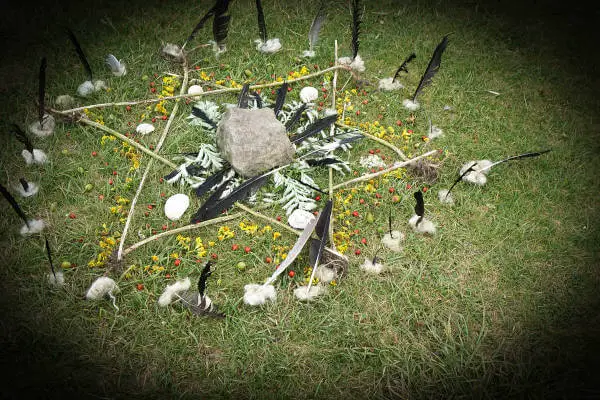
Later Developments
From the fifties to the seventies Wicca spread around the world first being called Wicca religion by Charles Cardell in a 1958 article in the Light Magazine.
He used the name to define the religion of all who practiced Witchcraft. During this period, there were more split and new Wiccan traditions.
The covens which followed Gardner’s ideals were known as Gardnerian Wiccans while another group emerged led by the likes of Sybil Leek, Charles Cardell, Robert Cochrane, and others who claimed to be traditional witches initiated in the religion by their ancestors and tried to dismiss Gardnerians as a modern or invalid form. They all shared the same practices and soon came to be identified by the same name.
By the 80s there were almost 50,000 Wiccans in Europe and North America although in different factions but sharing to a large extent the same traditions. Like any other religion, Wicca picked and refined more practices as it evolved and variants formed along the way.
It has become a leading neo-pagan religion thanks to the publicity and interest it receives. In the US for example, it has achieved several milestones like being officially recognized as a religion in 1986 in the court case of Dettmer v. Landon where the court ruled that Dettmer, an incarcerated Wiccan denied ritual tools for worship was under the First Amendment protection like any other religion.
In 2004, Wiccans won a court case allowing divorced Wiccans to teach their faith to their children and in 2005, following the US Army’s refusal to grant a Wiccan pentacle to the gravestone of the first Wiccan serving in the Army to die, a court case was initiated and the Veterans Administration now accepts Wiccan symbols.
The religion has spread worldwide, and numbers in millions with the US Wiccans placing between 300,000 to 3 million.
Do you want to learn more about Wicca and Witchcraft? Check out our recommendations at “Wiccan Bookshelf”
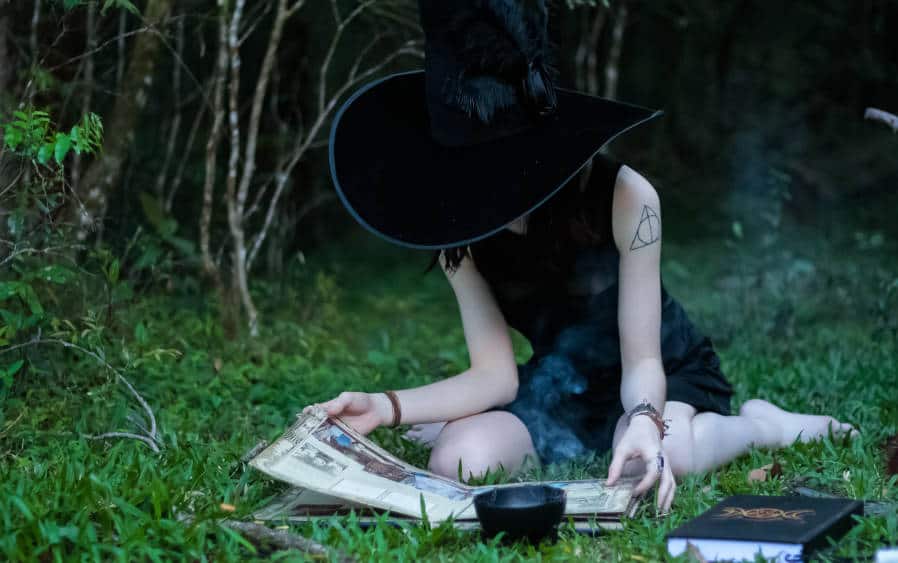
What are the main aspects of the Wiccan religion?
Aside from worshiping a god with both feminine and masculine attributes and the reverence for nature, one of the distinctive aspects of Wiccan religion is decentralization.
There is no central authority on earth or temples. The wild nature serves as a place for worship, and much of the practice is mostly done individually. In other areas, especially in Europe and the USA, some members meet in groups known as covens.
The application of the various beliefs and rituals is mostly down to an individual’s discretion though overriding ideals are the same.
Unlike other religions, there is also no holy book for spiritual guidance like the Bible or Quran; instead, practices are passed down from generation to generation like oral traditions.
Modern Wiccans do have their notebook which they right their observances while different covens can have their manuals on various rituals, and instructions. Most members do keep their book of shadows where they write their experiences and new knowledge.
Related reading: Most Commonly Practiced Branches of Wicca – Opens in new tab
Even without a holy book or central authority figure, there is still a code of ethics, which governs how Wiccans may act and interact with one another, nature, and the outside world.
The main system is what is known as the Wiccan Rede, which has been adopted by all Wiccans. There are also 13 principles of Wiccan belief which are also followed by most covens.
Other writings mostly in the poetic form are used to both guide rituals and lead worship, and they include writings such as The Charge of the Goddess (aff.link), The Charge of the God, and several other invocations.
It is the Wiccan Rede that is the source of Wiccans most central philosophy or instruction to harm no one. Following these ethics is what separates Wiccans and other Neopagan religions and organizations even if they may share certain aspects, especially with witchcraft. It is important to note that while Wiccans practice witchcraft, one can be a witch without being a Wiccan.
Another major aspect of Wicca is the observance of holidays and seasons largely guided by the moon’s position and phases, and the sun’s journey through the seasons.
The latter is what influences the Wiccan calendar known as the Wheel of the Year. The Wheel of the Year is not unique to the Wiccans, but it is their observation and translation of it that differentiates them from other earth religions. Below is a detailed breakdown of the Wiccan calendar and holidays.
Check out our free resources at “Free Library“

The Wiccan Calendar, Sabbats and Esbats
Holidays and celebrations mark specific points of the year when certain aspects of god or the goddess are prominent or when certain desires can be sought from the Supreme Being.
Observation of these holidays may differ slightly from coven to coven, but all usually involve an elaborate ritual followed by a feast of some kind.
The Wheel of the year is unchanging in any Wiccan practice, and it is a central feature of the religion. It provides the timing of the eight holidays in a year which is known as Sabbats. The eight holidays are dived into two categories;
- Four solar holidays mark earth’s journey around the sun and consist of the two equinoxes and two solstices.
- Four earth festivals which are also known as cross-quarter days as are found in between the solar points
The two groups are distinguished as greater sabbats (Earth Festivals) and lesser sabbats (Solar holidays). The purpose of this naming is largely for distinguishing the two, but it is also informed by the belief that during the earth festivals or holidays, there is a greater energy around.
The Wiccan mythology explaining the wheel offers a clue as to the reason for this perception. The wheel explains the cycle of nature and the balance of the male and female energies in the universe.
The sun is a representation of god, the male energy, and the earth representation of the goddess, the female energy who serves as both mother and creative partner to the sun.
The cycle is the sun/god’s birth, growth, maturity, aging, death, and rebirth explaining the presence and absence of sunlight and warmth across the seasons.
The earth/goddess is the ever-present energy, the unchanging constant, and this explains why her holidays are viewed to have greater energy.
This cycle explains the view of life among the Wiccan who also do not believe in eternal damnation or salvation but rather reincarnation after death.
The names and dates of the eight holidays are;
- Yule – Winter Solstice – December 20 – 23 which celebrates the rebirth and triumph of life over death (Read more about Yule, here).
- Brigid/Imbolc – February 1-2 which celebrates dedication, initiation, and purification (Read more about Imbolc, here).
- Ostara -Spring equinox – March 19 – 21 which celebrates conception and new beginnings (Read more about Ostara, here).
- Beltane – April 30 -May 1 which celebrates fertility, joy, and passion (Read more about Beltane, here).
- Litha – Summer Solstice – June 20- 22 which celebrates a time for planning and transitioning (Read more about Litha, here).
- Lammas/ Lughnasa -August 1-2 marks the first harvest, therefore, a time of thanksgiving, gratitude, and celebrating the abundance (Read more about Lammas, here).
- Mabon – Autumn Equinox – September 21- 24 celebrating the second harvest and a time of thanksgiving and reflection. (Read more about Mabon, here).
- Samhain -October 31-November 1, a time for honoring the dead, marking the Pagan New Year and cleansing. (Read more about Samhain, here).
The dates are given in ranges since the solar solstices and equinoxes while being precise events may occur on different dates in various parts of the world, and the date could also move from one year to another which affects the whole calendar.
Certain celebrations align with Christian celebrations since the pagan earth religions predate Christianity, which adopted these into its calendar. For example, Christmas is marked at the same time with Yule festivities while Easter is at the same time as Ostara.
The American tradition of thanksgiving also has its roots in pagan religion the same as the Halloween festival, which is marked at the same time as Samhain.
For Wiccans, these sabbats provide time for them to be more in tune with nature and an occasion to celebrate the divine every six weeks.
Esbats, on the other hand, are celebrations every four weeks when there is a full moon. The moon is feminine, and this is more occasion for Wiccans to celebrate, perform rituals, reflect, and seek favor in their lives. As is with many Wiccan belief aspects, there is great variation and goals for these celebrations.
Some covens and Wiccans still worship the goddess in her various aspects like maiden or crone. Others are now opting to mark the new moon instead of the full moon. All in all, the esbats are used to celebrate the relationship of the moon and the goddess.
Wiccan Rede
The word Rede comes from the Old English called “roedan” which is translated as to guide or to direct. The Wiccan Rede, as noted earlier, serves as one of the main guides for ethics and morality for Wiccans.
The Wiccan Rede in modern English states that “if it harms no anyone, do as you will.” The most common version reads as “An it harms none, do what thou wilt.”
The Wiccan Rede explains the overriding philosophy of the religion, not to harm. The Wiccan Rede serves as the guideline upon which every Wiccan evaluates his or her options and decides her actions having considered the consequences.
The Wiccan Rede deviates from the tradition of the main religions by not having a list of rules to follow defining sins and holy acts. Instead, it leaves the morality of every decision and action to the individual to decide the consequences of the decision in every action.
Do you want to learn more about Wicca and Witchcraft? Check out our recommendations at “Wiccan Bookshelf”
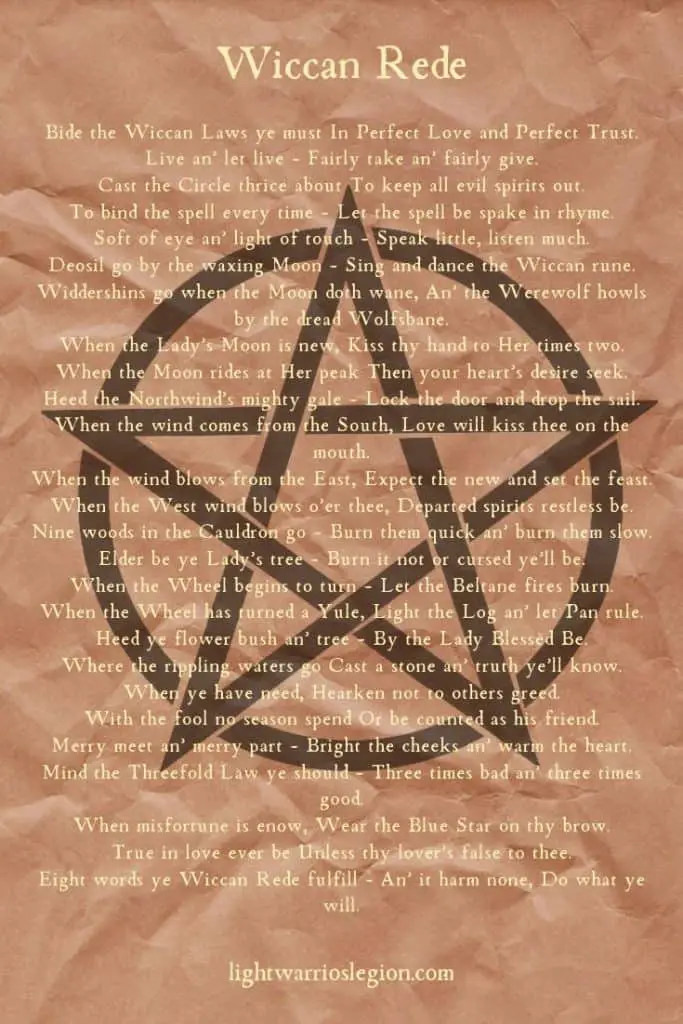
Origins and Inspiration Behind the Wiccan Rede
Like many of the modern aspects of Wicca, the Wiccan Rede is a reconstruction based on many sources and inspired by writings way earlier before Wiccan was a recognized religion.
The two main sources attributed as the main inspirations behind the Wiccan Rede are Aleister Crowley in his The Book of the Law (aff.link) guide to his Thelema religion which states that “Do what thou wilt shall be the whole of the Law.”
This book was written in 1904 and influenced the writings of Gardner and other Wiccan writers who helped develop Wiccan ethics and belief structure.
The other main inspiration is the 1901 French play by Pierre Louys’s The Adventures of King Pausole (aff.link), where in one passage the lead character advises that “Do no wrong to thy neighbor. Observing this, do as thou pleases.”
This passage is credited as an inspiration for Gardner in his later writings, especially his 1956 book, The Meaning of Witchcraft which directly alludes to the Adventures of King Pausole when instructing members to do as they like as long as they cause no harm to anyone.
As for Crawley, his inspiration dates back further to a 1534 novel by Francois Rabelais Gargantua (aff.link), which instructs people to do as they will since the natural honor of men raised well gives them an instinct that guides them to virtue, in essence, allowing them to do as they will.
Despite all these early sources, the present form of the rede did not appear until 1964 in a speech by Doreen Valiente which would be the first time the rede in our present form would appear publicly with Valiente saying “Eight words the Wiccan Rede fulfill, An’ it harm none, do what ye will.”
Later works by Gardner, Valiente, Hanz Holzer, Alex Sander, and witchcraft newsletters would now carry the rede in this form or a slight rewording announcing it as the overriding creed of Wiccans and general witches.
As Wicca became more publicly available and interest in it grew from the public, the more the rede became accepted across different covens and as the morality guide for those who identified themselves as Wiccans though it has spread to the general witchcraft belief system.
In 1975, a 26-line poem was published in the Green Egg magazine where the last line contained the rede, which would popularize the rede as the poem became adopted as a more significant part of rituals and teaching to newcomers and over meditation.
Ultimately, the lack of a continuous tradition from pre-Christian witchcraft traditions means the Wiccan rede can be concluded to be a modern addition to the witchcraft belief system.
However, while the wording may have come from Valiente and inspirations from Aleister Crowley to early literature, the spirit of the rede is found in many ancient religions, creeds, stories, and practices.
The second part especially, which urges one to do as they will be found in Upanishads teachings, ancient Greeks and even writings of St. Augustine which imply that upon certain attainment of spiritual evolution an individual rises above the confines of right and wrong and his or her action are thus right on their own.
Wicca Diploma Course
- Certified Course
- Accredited Course
Course Information
- 10 Modules
- Lifetime Access
- Study Group Access
Use “LIGHTWARRIORSLEGION466 ” code for 70% off.
Interpretation of the Wiccan Rede
The pertinent question is, why was the Wiccan Rede adopted? It is not like other commandments or codes of conduct, and what amounts to harm is largely left to personal interpretation.
Some suggestions, especially from the writings of Gardner, implore the witches to avoid causing harm even to those opposed to them to avoid blame being directed to the Wiccans and stirring further witch hunts and suspicions in the society.
There is no specific law that forbids witches from doing harm and describing what can be classified as harm. Some other readers have seen the insistence on harm none as a later day introduction as a way to change the narrative and image of the witches in the public which is ever suspicious thanks to ages of misinformation, fear and hatred spread by most mainstream religions against the witchcraft.
However, many witches currently interpret the Rede almost as a law allowing their expression of free only to the point of which it causes no negative consequence to anyone.
Most do add themselves in the “none” while others believe it applies to others, not themselves.
This last interpretation has become predominant and among what can be considered actions that lead to harm include manipulation and other attempts to control including coercion, causing hurt to a group or an individual, domination, and harassment.
The Three-fold Law
The full reed introduces the element of the threefold law to reinforce the idea of harming no one. This law is inspired by the general principle of karma found in many pagan and natural religions. It is also grounded in the Law of Return, which states that whatever is sent into the universe comes back to the sender.
The sending can be done in thought, magic-like spells, and direct actions. Wiccans make the principle of karma more specific by adding a definite equation, which makes up the three-fold law.
This law states that whatever is done by a witch, especially through magic, whether positive or negative, is returned to the witch three times. Some interpret the three times to be three separate incidences while others view it as a multiplier. Thus, the retuning effect will be three times what was sent out.
While not all Wiccans believe in this, all do believe in the karmic consequences of their actions, and this law serves as an elaborate reminder.
When used along with the Wiccan Rede, it demands that one carefully evaluates their actions and motivations and any potential negative consequences.

The 13 Principles of Wiccan Belief
In April 1974, a group of pagans and witches from different traditions met in Minnesota as the Council of American Witches. In their meeting that lasted a couple of days, the council codified a set of 13 statements, which described the philosophy, and practice of those who practice witchcraft.
While there is no central authority in the Wiccan religion, this set of statements has been adopted in full or part by many Wiccans and serves to educate and inform the new initiates, remind older initiates of their commitment and purpose and also to counter the misinformation in public regarding the motives and activities of Wiccans.
As the introduction to the statement states, the 13 principles would serve to differentiate the Wiccans from those who sought witchcraft for harmful and negative self-serving purposes.
They also leave the way open to those who are interested in learning the tradition and also help them identify what the right practice from the evil or corrupt philosophies and use of magic was.
The thirteen principles explain the Wiccan religion, its relationship with other religions, its structure, what it means to be a witch, the role of nature, the divine and deities as well as the Wiccan view of Satan and evil, and finally their commitment to world harmony and to causing no harm.
Related article: The 8 Major Annual Wiccan Holidays (Sabbats)
Stay in Touch
 Join our newsletter by using the forms on this website or click here!
Join our newsletter by using the forms on this website or click here! Follow us on Google News
Follow us on Google News Follow us on Facebook
Follow us on Facebook
Featured Image by Gerd Altmann from Pixabay
Do you want to learn more about Wicca and Witchcraft? Check out our recommendations at “Wiccan Bookshelf”

